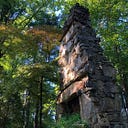Member-only story
The Local and the National
As I reread the March trilogy, I kept thinking about, as I’ve written about recently, the things that March doesn’t cover in regard to the Civil Rights Movement. Like I’ve mentioned before, this is understandable, especially since the trilogy centers on John Lewis and his work. Today, though, I want to talk about ways that educators can use March as a starting point to engage students in a broader conversation surrounding the Civil Rights Movement. This could include expanding their chronological definition of the movement, beyond the 1954–1965 time period. While this is one avenue, when I taught March this semester I thought about another activity that students could do to help them bring the Civil Rights Movement to their own communities, learning about the ways that their communities reacted to what they read about in March and other texts.
I began to think about this as I read the sequence on the murder of Addie Mae Collins, Carole Robertson, Cynthia Wesley, and Denise McNair on September 15, 1963, during the bombing of the Sixteenth Street Baptist Church in Birmingham, Alabama. I began to think back to things I learned about my hometown of Shreveport, Louisiana, and incidents there following the August 1963 March on Washington for Jobs and Freedom and the church bombing a month later. My mind, as I read this section in March, immediately went to Shreveport’s Public Safety Commissioner George…
